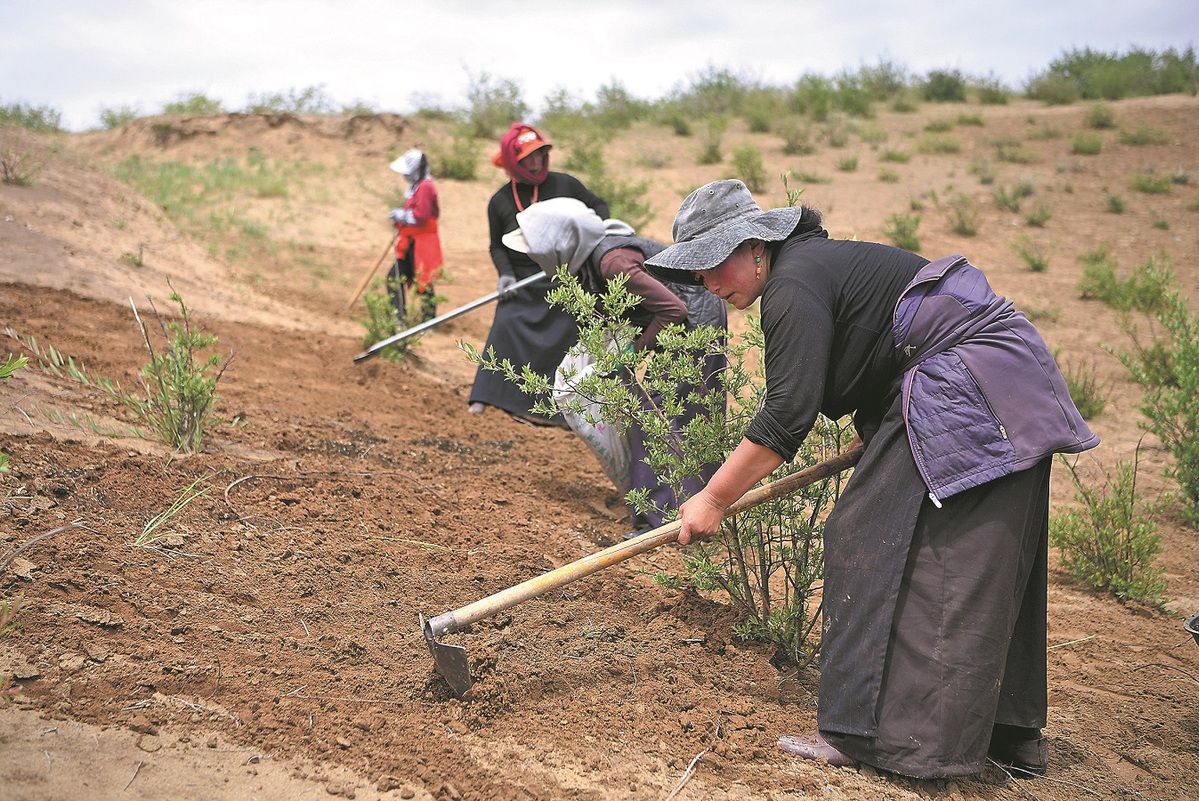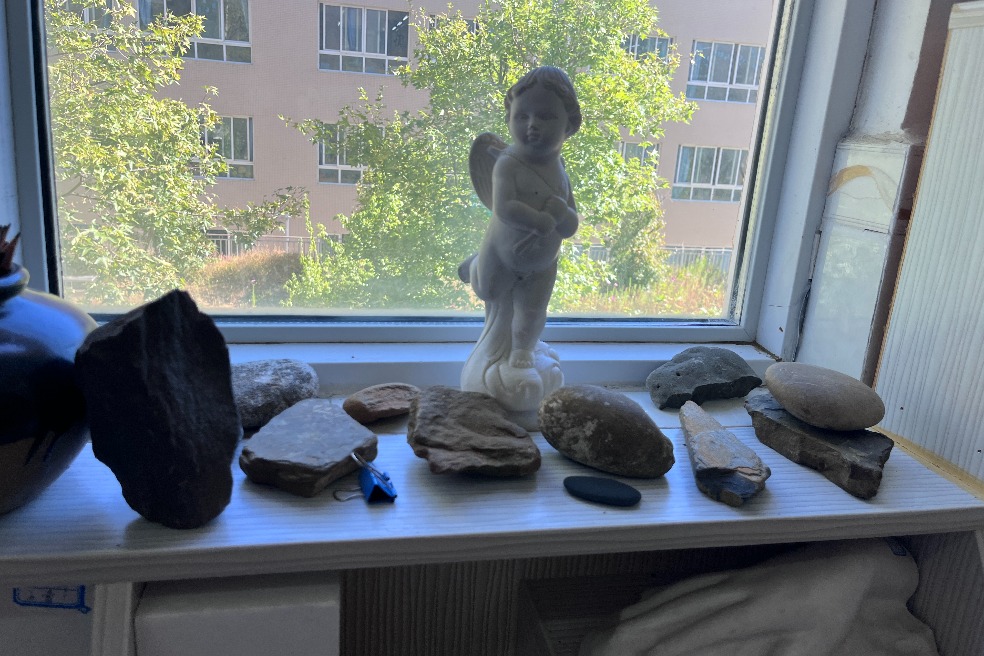Yellow River Basin on course for greener future
Efforts stepped up to ensure ecological protection, high-quality development






Fighting a 'green desert'
In Dongying, Shandong province, where the Yellow River flows into the sea, a different problem is being dealt with — controlling the spread of an invasive plant species.
"For many years, we have been in a battle with this 'green' in the delta," said Zhou Licheng, head of the planning and construction department in the Shandong Yellow River Delta National Nature Reserve in Dongying.
The "green" he is referring to is smooth cordgrass, or Spartina alterniflora, a plant native to the US Atlantic coast and a dominant species in coastal intertidal wetlands due to its tolerance to fluctuating water depths and salinity.
"A large part of the reserve appeared to be lush and green, but it was actually a deceptive 'green desert' where most of the native flora and benthic organisms had died. The soil smelled foul whenever roots were dug out," said Zhou.
Now the "green desert" has disappeared thanks to years of effort to eradicate the cordgrass.
In the reserve is a stone monument inscribed with the words "Shengli Oilfield Kendong 12", marking a former oil extraction site and the primary battleground for controlling smooth cordgrass.
From a vantage point on a high platform, visitors can see the vast expanse of tidal flats stretching toward the distant horizon. Next to the stone monument, there is a row of display boards showcasing photos of the area in the past — endless expanses of lush, green cordgrass.
Beside the display boards are withered specimens of smooth cordgrass, with roots resembling a bird's nest and stems stretching up to 2 meters in length.
"Its name sounds romantic and poetic, with an appearance resembling rice ears," said Zhou, adding the plant has strong salt tolerance.
In the 1980s and 1990s, the plant was introduced to Dongying to stabilize embankments and slow coastal erosion.
"At the beginning, we did not fully understand its harm and simply saw it as scenic. Later, its growth became too vigorous, making other salt-tolerant plants disappear. Birds had nowhere to find food, so they flew away," Zhou said.
"We dug up a smooth cordgrass and found that its roots could penetrate nearly one meter into the soil. The roots contained many clam and crab shells, and emitted a putrid smell," he added.
The area of smooth cordgrass in Dongying covered 8,733 hectares by 2010, posing a severe threat to the delta's wetland ecosystem.
The city began to explore ways to control the spread of the plant in 2016. In the reserve, workers set up an experimental field and tried six control methods, incorporating both physical and chemical technologies.
Eventually, they worked out a control strategy tailored to specific areas, and in 2020 began to clear the smooth cordgrass.
They removed all aboveground vegetation before their seeds matured and were dispersed. Workers then enclosed specified areas with a special film to trap and hold up to 60 centimeters of seawater, which killed the plant's root system by subjecting it to high salinity levels for 90 days.
Another method involved continuous plowing to crush the roots to about 10 centimeters so they could be cleared away.
Meanwhile, workers restored native species such as Suaeda salsa and seagrass beds, which helped conserve biodiversity and improve soil quality.
More than 99 percent of smooth cordgrass has been removed from the reserve, leading to the return of some fauna that had been absent for years.



















